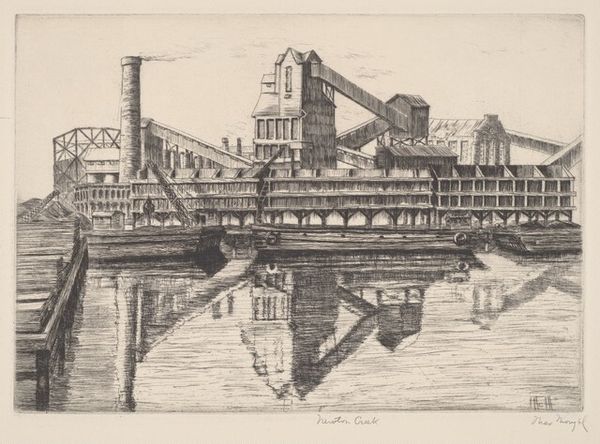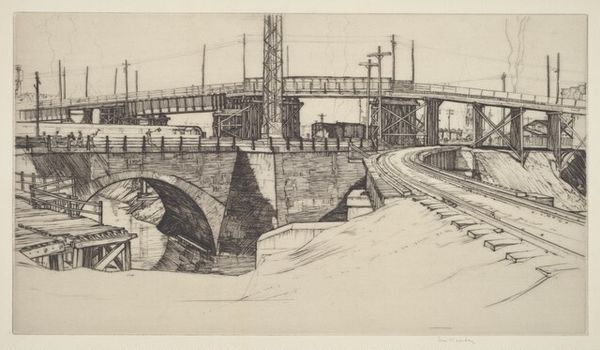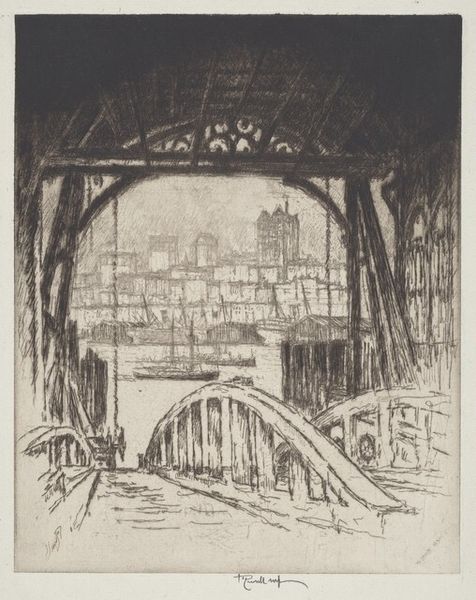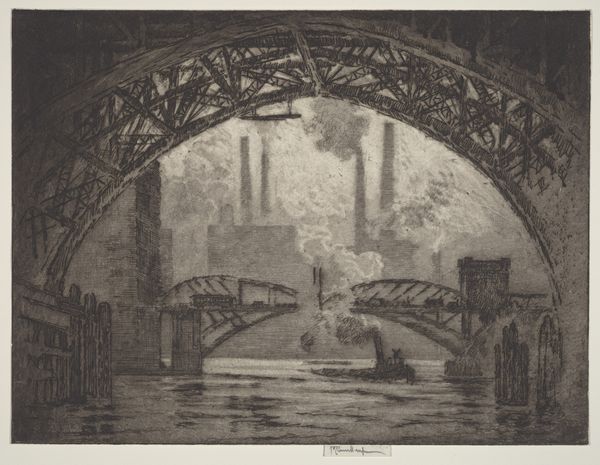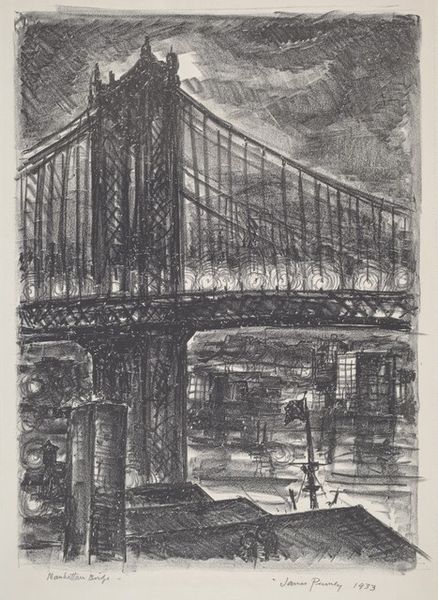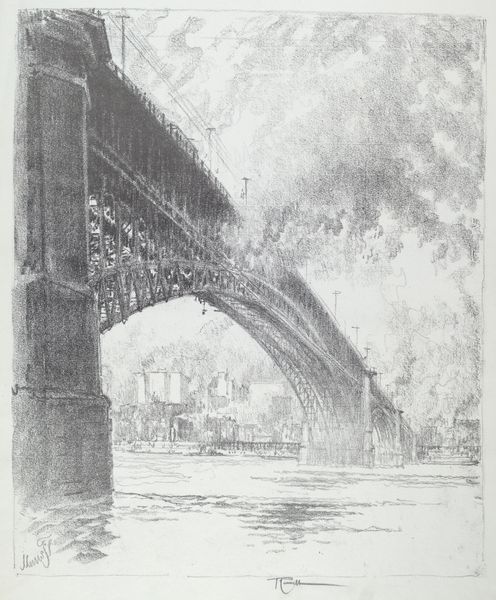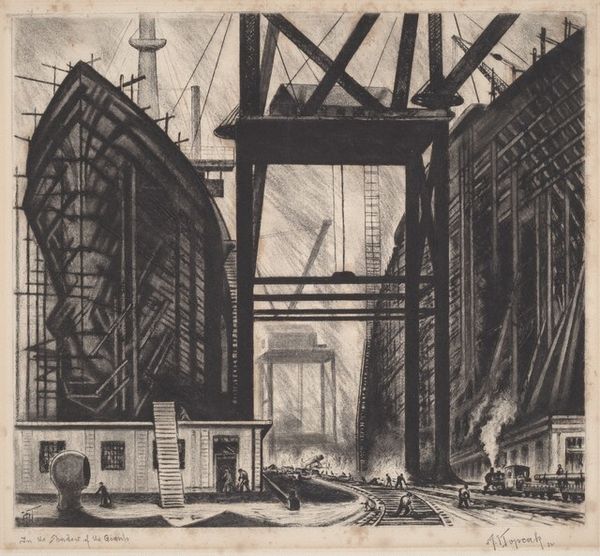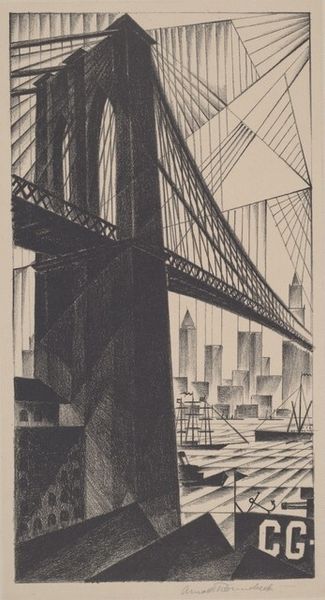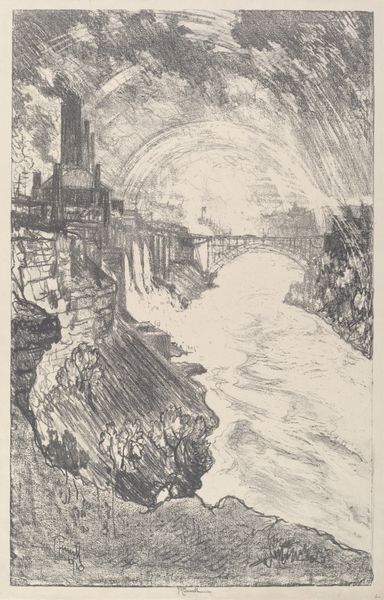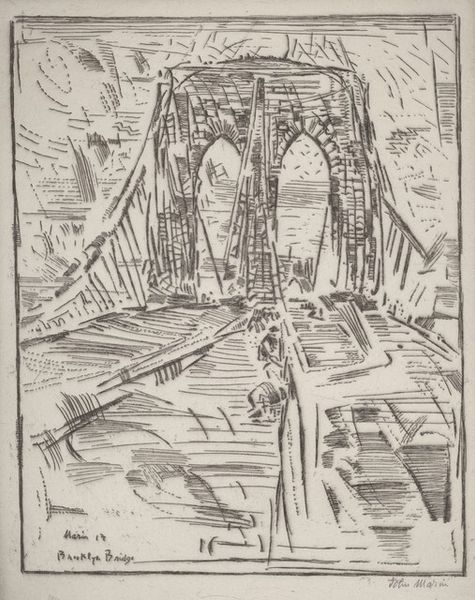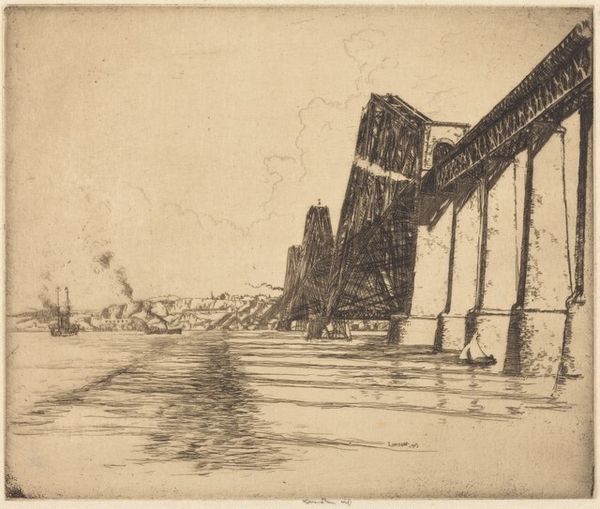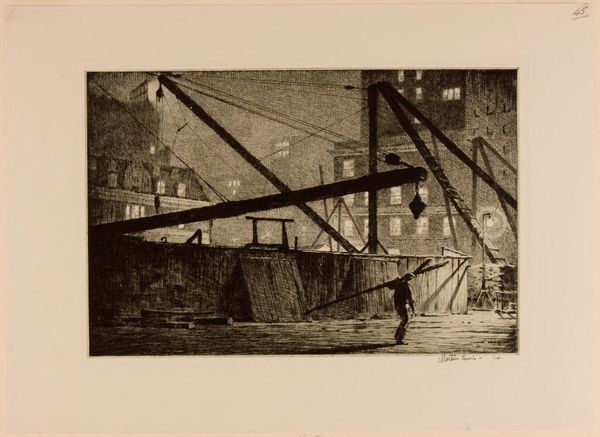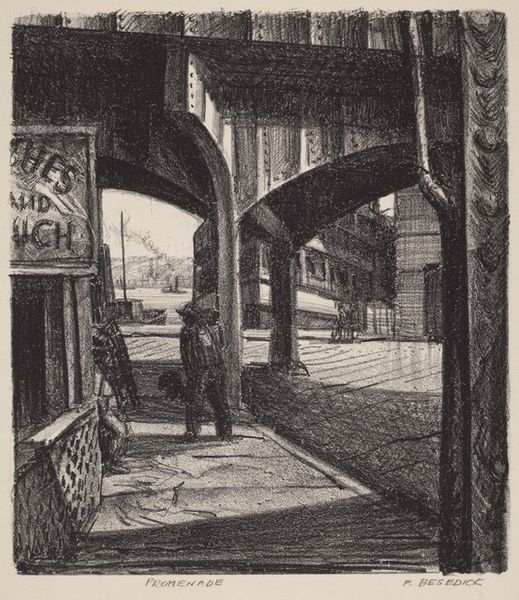
drawing, print, pencil
#
pencil drawn
#
drawing
# print
#
charcoal drawing
#
pencil drawing
#
geometric
#
pencil
#
cityscape
Dimensions: plate: 230 x 182 mm sheet: 303 x 229 mm
Copyright: National Gallery of Art: CC0 1.0
Editor: Here we have Kálmán Kubinyi's "High Level Bridge," created sometime between 1930 and 1935 using pencil and print. I'm immediately struck by how the artist contrasts the man-made, geometric rigidity of the bridge with the softer, more organic forms below. What jumps out at you when you see this piece? Curator: Well, what I see is an artist engaging with the urban environment in a period of rapid industrial expansion. Bridges, especially "high level" bridges, become potent symbols of progress, connection, and engineering prowess. Consider how the artist positions us, the viewers. We aren't looking *at* the bridge head-on, but from a more grounded, human perspective amidst the city. Why do you think the artist chose that particular viewpoint, almost obscured by other structures? Editor: Perhaps to emphasize the bridge's integration within the cityscape rather than its dominance *over* it? The eye isn’t drawn solely to the grandeur, but to its everyday use. Curator: Precisely! The choice of rendering it in pencil and print further contributes to this reading. These accessible mediums democratize the image, making it reproducible and available to a wider audience. It's not about celebrating the elite engineers or the government, but about reflecting on the public's relationship with this infrastructure. How might this image function in the context of public art at the time? Editor: Maybe as a way to promote civic pride or even a kind of understated propaganda highlighting progress after periods of social unrest? Curator: An interesting point. Consider also how the bridge itself shapes the lives of the people walking underneath. It’s a silent, concrete influence shaping their routes, opportunities, and perhaps even their aspirations. Did the conversation change your view? Editor: Yes, definitely! I was initially caught up in the composition, but now I see the artist using it as a reflection of social structures. Thanks! Curator: And for me, it reinforced the ever-present and public nature of art and architecture in our society.
Comments
No comments
Be the first to comment and join the conversation on the ultimate creative platform.
